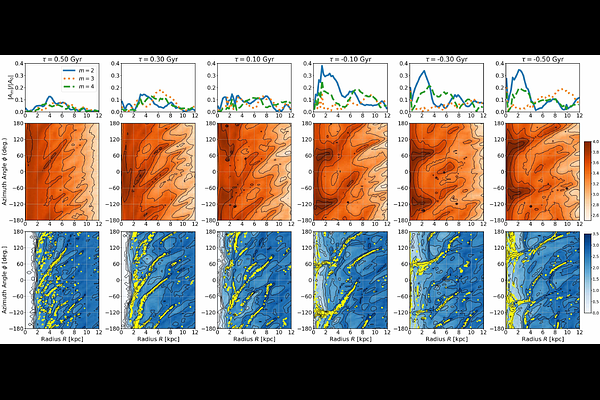Influence of Bar Formation on Star Formation Segregation and Stellar Migration: Implications for Variations in the Age Distribution of Milky Way Disk Stars

Influence of Bar Formation on Star Formation Segregation and Stellar Migration: Implications for Variations in the Age Distribution of Milky Way Disk Stars
Junichi Baba
AbstractWe present a chemo-dynamical $N$-body/hydrodynamic simulation of an isolated Milky Way-like galaxy to investigate how bar formation influences star formation rates, stellar migration, and the resulting age and metallicity distributions of disk stars. Focusing on the transient epoch of bar formation, a phase that triggers gas inflows, enhances local star formation, and drives significant orbital migration, we find that the star formation rate in the inner disk exhibits a pronounced peak during this period. This behavior arises from the combined effect of vigorous star formation driven by strong spiral arms prior to bar formation and the subsequent suppression of star formation once the bar is established. In contrast, star formation in the outer disk persists after bar formation at modest levels, and enhanced outward migration of stars originally formed in the inner regions gives rise to a pronounced peak in the outer disk's stellar age distribution corresponding to the bar formation epoch. Moreover, stars formed during this epoch tend to exhibit higher gas-phase metallicities, reflecting their origin in more metal-rich inner regions. Although our model does not capture every detail of the Milky Way's complex evolution, our results highlight the dominant role of bar driven migration in segregating star formation activity and in shaping the long-term chemical and age structure of the Galactic disk. Recent observational studies suggest that the Milky Way's bar is approximately 8 Gyr old; therefore, our findings imply that the age distribution of stars in the solar circle and outer disk should show a corresponding peak around that age.